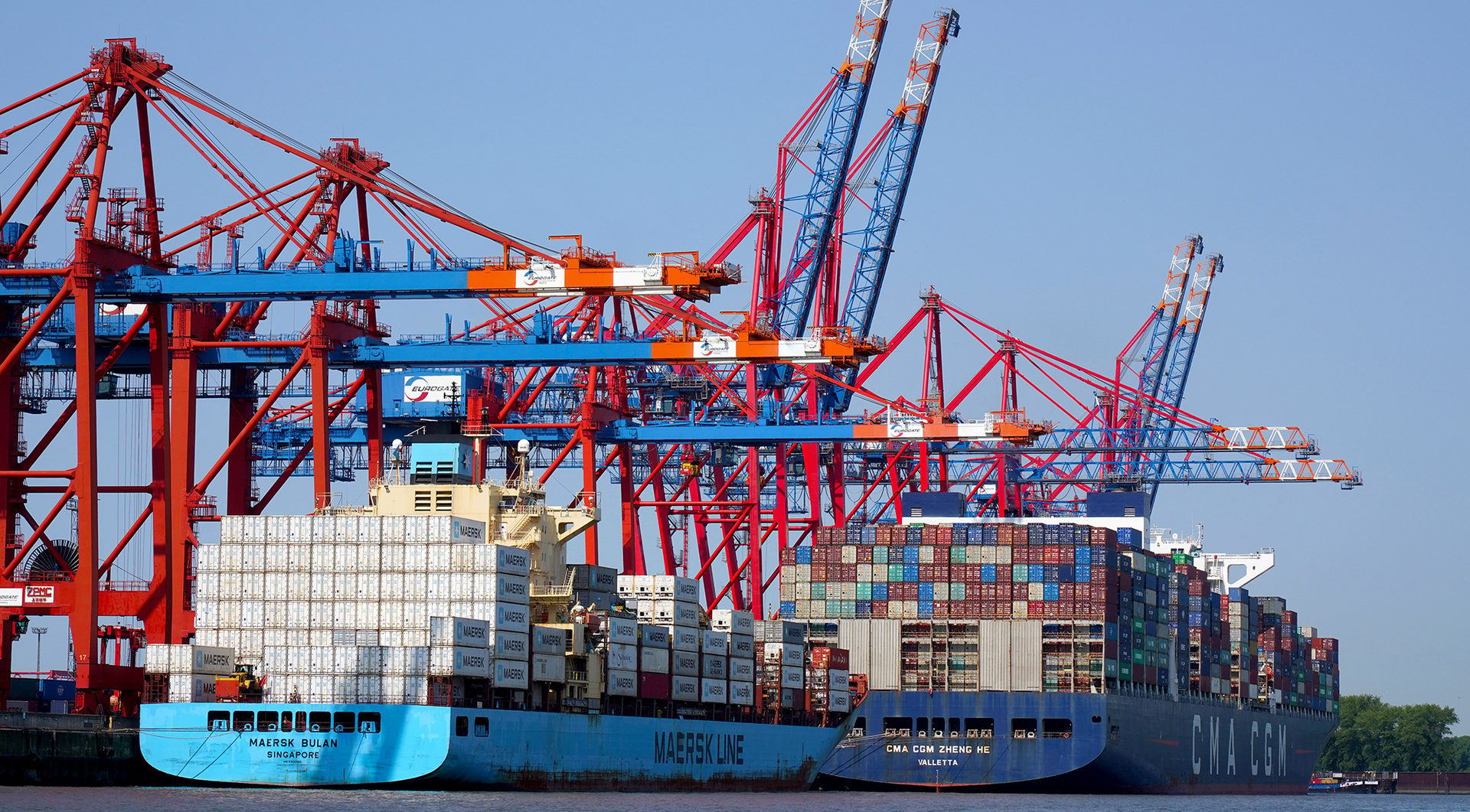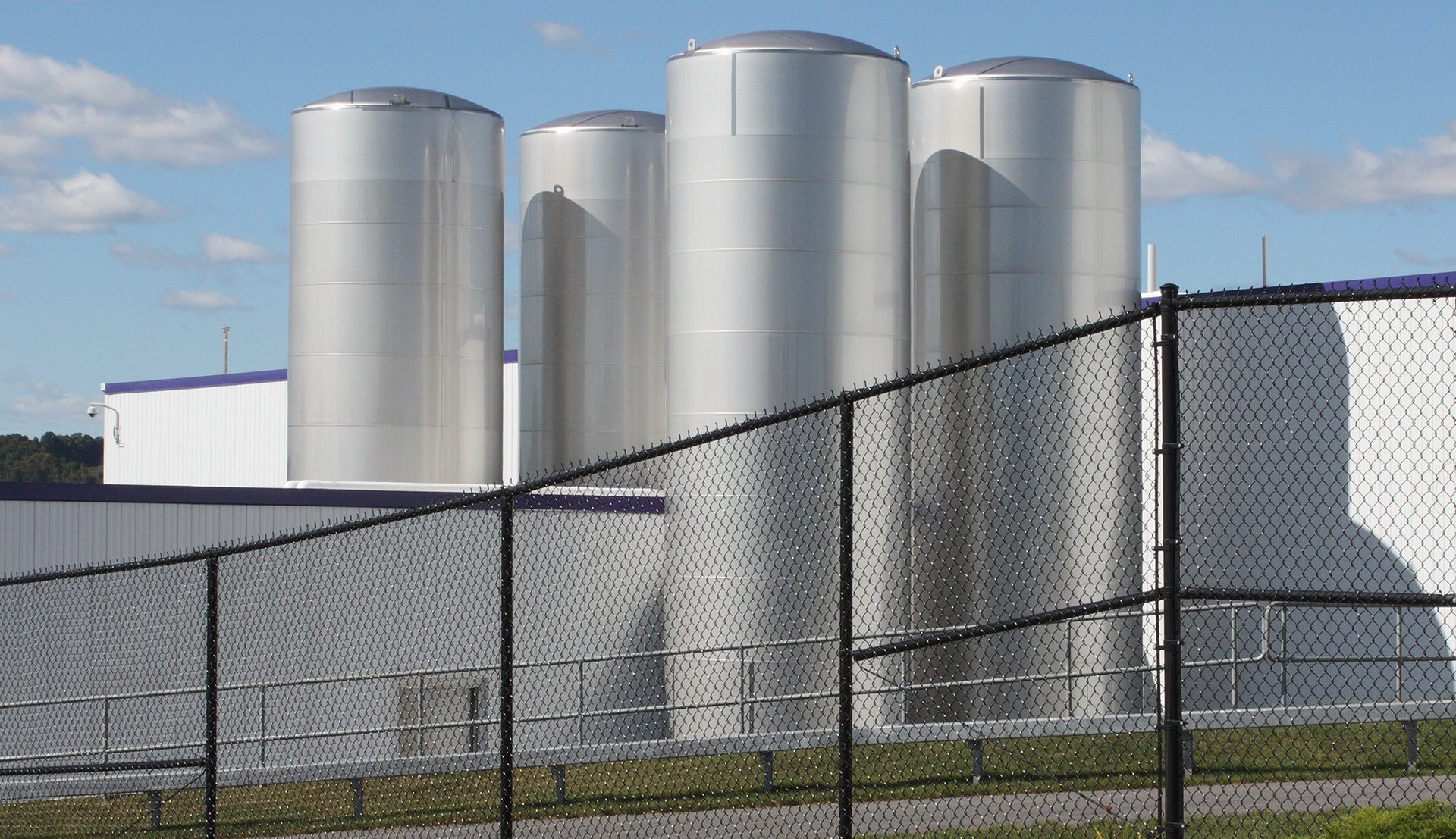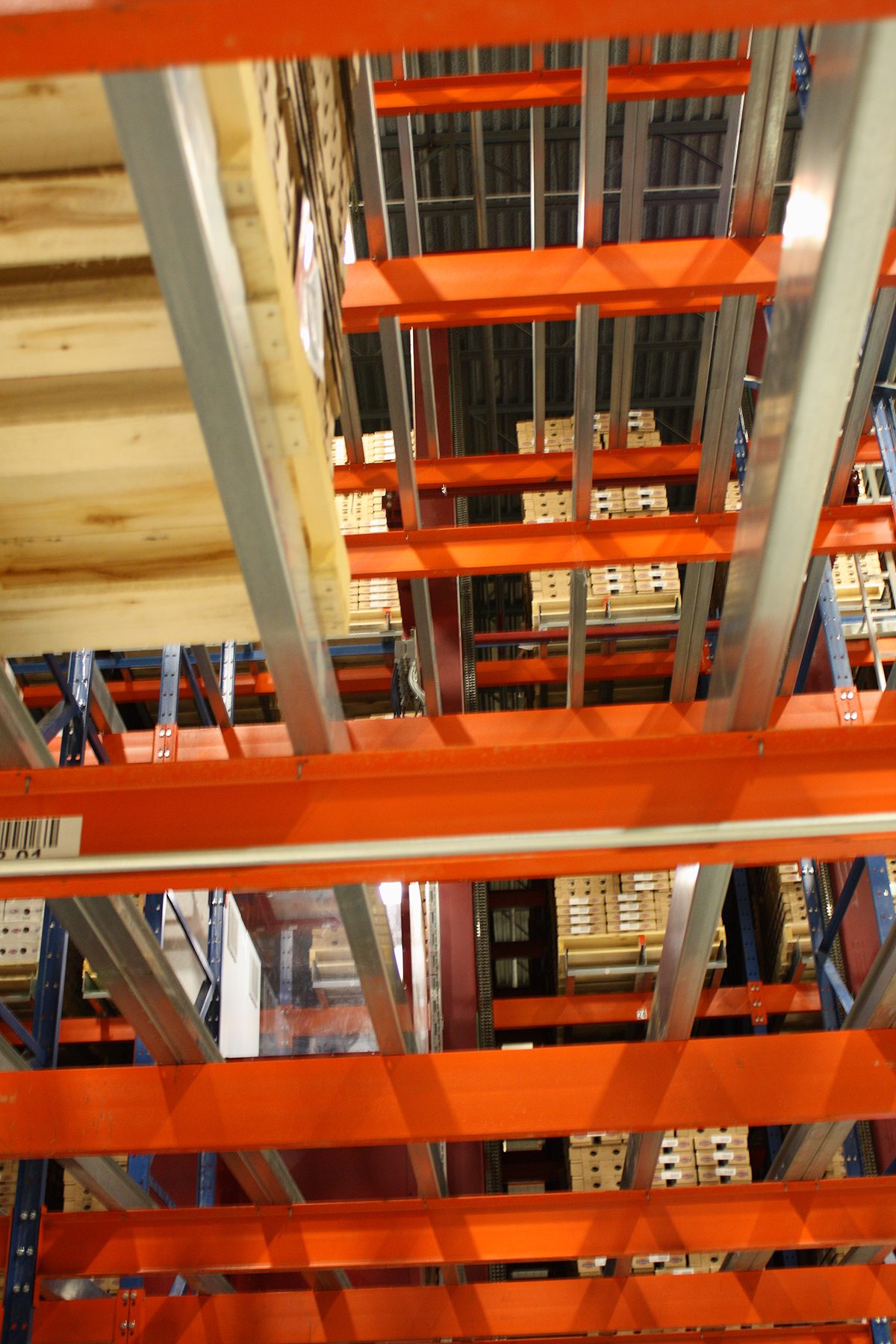january 2023

automation
System Update?
Time for a Supply Chain
Supply chains have been tenuous for the last two years, and it’s not likely to get better any time soon.
A recent “Manufacturing Innovation Blog” from NIST (National Institute of Standards and Technology) described a supply chain issue and the ensuing problems a food processor faced when it was forced to use an alternative supplier for an ingredient contained in a white chocolate coating. The “new” ingredient wasn’t quite the same and resulted in an off-spec white chocolate coating that was different and not as reliable. The effects of the change rippled throughout: from recipe changes, operational temperature, processing equipment parameters and quality measurement methods to storage, equipment cleaning, traceability compliance, documentation and training.
Could an advanced supply chain system with machine learning have helped mitigate this unplanned supply chain disruption? Could such a system foresee a potential shortage of a key ingredient caused by a weather disruption, political conflict or transportation issue and suggested stocking additional product?
Research from Deloitte’s “2023 Manufacturing Industry Outlook” found that 80% of surveyed manufacturing executives have experienced a “heavy” to “very heavy” impact of disruption on their supply chains over the past 12 to 18 months. Seventy-two percent of surveyed executives believe the persistent shortage of critical materials and the ongoing supply chain disruptions present the biggest uncertainty for the industry in the coming year. The research also found that manufacturers are using digital technology to help mitigate these risks.
BY WAYNE LABS, senior Contributing technical editor
For processors importing and exporting products around the world, a supply chain planning system is a must to keep track of incoming ingredients and location of finished goods. Image courtesy of Tumisu from Pixabay
During the COVID-19 pandemic, container ships were stacked up at the ports of Los Angeles and Long Beach, Calif., without sufficient crews to unload them, creating a major supply chain crisis on everything from electronics to food ingredients. Image courtesy of Markus Kammermann from Pixabay

The Deloitte paper also points out that companies with higher digital implementation tend to have increased supply chain visibility and are better able to adapt to supply chain challenges. Continued investments in advanced manufacturing technologies can help develop the required agility to foresee and work around supply chain disruptions.
Standard Data is Key to Traceability and Managing Supply Chains
If you’ve ever self-published a book, you know that the ISBN number on the back cover and inside the book is a unique international ID that defines the book title, publisher and often the price. Like ISBN numbers (which are managed by Bowker), UPCs (Universal Product Codes) are managed by GS1 and are universally/internationally accepted. UPCs trace to a specific product, where SKUs are assigned by the company making the product(s). Both UPCs and SKUs can be used and traced in inventory systems, however, UPCs will work internationally.
“One of the most important changes taking place in supply chain management is the industry-wide adoption of global data standards for product and location identification, as well as transactional event documentation,” says Angela Fernandez, vice president community engagement, GS1 US. Food processors should be collaborating with their supply chain partners to ensure information and systems compatibility that enables critical track-and-trace of products moving through the supply chain. This allows stakeholders to know where products are at any time and to share key data that provides end-to-end supply chain visibility, enabling improvements in ordering, distribution, inventory management and forecasting. Most importantly, those products can be quickly identified, located, and removed from distribution or sale in the case of a recall, when speed and accuracy are critical, says Fernandez.
“With product information available in real time in a common language all trading partners can ingest and understand, it becomes possible to quickly identify when something goes wrong,” adds Fernandez. If a product shipment is delayed, for example, a grocer might want to make a substitution. Or if an ingredient becomes unavailable, the producer might seek an alternate source. And when a food safety alarm is raised, all supply chain parties rely on consistent product information to ensure an effective withdrawal that is laser focused to avoid unnecessary waste and protect consumer safety.
During the COVID-19 pandemic, dairy operations had problems with getting sufficient milk supplies due to inadequate transportation from farms to processors. Image courtesy of Wayne Labs

Furthermore, data standards are an integral part of the U.S. Food and Drug Administration’s (FDA’s) Food Safety Modernization Act (FSMA) that aims to improve supply chain traceability so fast, efficient recalls can be reliably executed when necessary.
“Essential data used to track products in the supply chain include unique product identification—usually in the form of a GS1 Global Trade Item Number (GTIN) embedded in a barcode,” says Fernandez. Scanning the barcode at every stop along the product’s journey and sharing the data with supply chain partners enables stakeholders to exchange real-time, accurate information about the product’s status.
Software Systems and Data
For smaller food processors, controlling ingredient and finished products inventory may be accomplished successfully with functionality contained in an ERP or MES. But when processors become larger and maintain inventory in connected or remote warehouses, keeping track becomes more difficult, and more dedicated warehouse management system (WMS) tools may be necessary.
Attached to a plant, an AS/RS warehouse is fully automated but relies on a WMS to automate the stocking and removal of finished goods for shipping. Beyond the WMS, an ERP system manages the supply chain and receives inventory information from the WMS. Image courtesy of Wayne Labs

“For multi-site facilities, the visibility and planning capabilities across facilities at a WMS level is often lacking, causing redundancies of activity, capacity balance inefficiencies, excessive inventory levels and inventory management hurdles (lot code or date code management across facilities),” says Kyle Nevenhoven, Dematic principal consultant. “Additionally, many legacy software systems are very rigid and unable to adapt to today’s volatile and ever-changing marketplace.”
“Visibility and forecasting driven by predictive analytics is key,” adds Nevenhoven. “Investing in tools that allow facility operators and supply chain leaders to gain full control over an operation, and over multiple sites, allows for real-time and data-driven decision making.”
ERP Systems Reworked for Modern Supply Chains
At one electronics company where I worked, the existing ERP system could barely handle inventory, let alone supply chain issues. So, there was a lot of make-to-stock going on, which wasn’t very cost effective for products that sat on the shelf without buyers. Fortunately, today’s ERP systems are more ready to handle supply chain disruptions and focus activities where needed.
“Traditional ERP systems work well in stable environments,” says Marcel Koks, Infor senior director, industry & solution strategy, food & beverage. “Some fluctuation in demand can be managed, but today there are many disruptions in sourcing of ingredients and packaging, transportation and even in the factories because it’s hard to find sufficient workers. Also, prices are increasing. The future is hard to predict, so food processors need to be resilient.”
“Key for resilience is first of all visibility of the supply chain, and secondly being able to quickly evaluate options,” adds Koks. “What you see at many food processors is that it takes a lot of time to gather all information, such as where are the goods in the supply chain and which quantities and qualities are expected from the harvest. And then the planners are using fixed planning rules that simplify the reality to create a plan. This makes the planning cycle too long, disconnected from reality and not responsive.”
What’s needed are supply chain planning tools that provide visibility and the ability to quickly generate planning scenarios that consider many options to finely tune service levels and minimize costs. These tools can be implemented with existing Infor systems, or as part of the company’s CloudSuite Food & Beverage solution.
Plex Systems, now part of Rockwell Automation, has offered several automation solutions over the years, ranging from ERP, MES, quality management systems (QMS), supply chain planning (SCP) and asset performance management (APM)—to name a few. The company’s ERP system includes supply chain management and MES capabilities in a unified system.
A newer Plex offering, DemandCaster SCP, helps organizations more accurately forecast demand, says Jim Bresler, director of product management, food & beverage. “When it comes to inventory and demand forecasting, even a 1% improvement in accuracy can result in double-digit percent-of-revenue increases,” says Bresler.
DemandCaster SCP applies machine learning (ML) technology to historic inventory and procurement data to provide insights surrounding optimal inventory procurement strategies based on context, says Bresler. “When ML analysis is used on contextual historical data, it can produce insights that could never be realized by human analysis due to the sheer volume of data involved.”
Plan on the Right Tools
Visibility and forecasting driven by predictive analytics is key to improving supply chain visibility, says Dematic’s Nevenhoven. Investing in tools that allow facility operators and supply chain leaders to gain full control over an operation, and over multiple sites, allows for real-time and data-driven decision making.
"It is not uncommon now to approve a project on the basis of a 7-to-10-year ROI, as oftentimes doing nothing is simply not an option, and doing too little will limit a processor’s ability to continue to grow their top line revenues." — Kyle Nevenhoven, Dematic
Railroads are a convenient and efficient way to move commodities like sugar, molasses and grain. They’re generally on time, and many processors have sidings to accommodate them. But even rails can face labor shortages and strikes plus maintenance problems. Staying on top of potential delays is a task for supply chain software to keep processors informed of delays. Image courtesy of ReneSchulze1984 from Pixabay

We’ve already seen that real-time visibility of demand, supply and inventory in the supply chain is priority number one in circumventing supply chain issues. But the best route to this visibility depends on the current situation of a food processor, says Infor’s Koks. For example, it makes a big difference whether a processor has a lot of overseas suppliers or is dealing with local farms. In the first situation a manufacturer might need a supply chain “control tower” and connection to a multi-enterprise supply chain commerce platform. In the second situation, it might be a portal. After visibility comes supply chain optimization, which quickly creates a balanced plan considering all the constraints and options. This, combined, makes it possible to sense and respond to changes and disruptions in the supply chain fast.
The optimal order of implementing solutions for a digital transformation will depend on a processor’s unique needs, the products they’re making, location and types of customers they target, says Plex’s Bresler. Strategizing, managing and developing new technology solutions to optimize inventory and supply chain planning can be incredibly costly from a resource perspective. Therefore, processors need to work with solution providers to discuss optimal solutions that meet the manufacturer’s budget.
Budgeting for Supply Chain Analytics Tools
When asked how a processor should budget for these tools, Dematic’s Nevenhoven suggested that first a mindset change is needed to think of the supply chain as a strategic advantage, and to prioritize the budgeting of these tools. Identify gaps in current processes and determine which key data points should be managed to improve operations the most.
The budget for deploying new solutions will depend on the scale of the enterprise and scope of the technologies employed, says Bresler. In some cases, solutions can pay for themselves shortly after deployment. The tools that should take the highest priority will depend on the unique business needs of the food manufacturer. Solution providers have the experience to work up business cases based on a processor’s needs.
Supply chain planning software can help processors stay ahead of problems that might crop up in any form of transportation around the world. Built-in machine learning can help predict delays caused by weather and its affects on crops, on-going political issues and lack of labor to move imports and exports. Image courtesy of Tumisu from Pixabay

As most solutions providers offer cloud-based subscription services, Koks suggests that to get started, subscriptions can be a less expensive way for processors concerned about budget. Subscription services lower the upfront investment and makes it possible to scale up and expand with new capabilities when the processor needs it. Benefits to cloud services includes always up-to-date software and a minimal investment in hardware. In addition, subscription services are considered an operational cost, which may be a tax benefit for some processors. Of course, with a subscription service, there will still be some implementation costs, but they will be typically less than an on-premises installation.
Gauging ROI
How should a processor look at ROI when investing in new supply chain tools? What is a reasonable expectation in ROI?
Of course, determining supply chain tools implementation costs and ROI will vary depending on needs. For example, if a processor already has the right hardware and WMS installed in the warehouse(s), implementing higher level supply chain and forecasting tools may not need a do-over or extreme changes at the warehouse level. Only experienced tools providers and system integrators will be able to study systems and determine what works best.
“For many years, supply chain tool investments were expected to have a fast ROI, often in the two-to-four-year range,” says Nevenhoven. “As technology has evolved, the supply chain has become more complex, and operational difficulties such as labor shortages have become much more prevalent, changing ROI expectations significantly. It is not uncommon now to approve a project on the basis of a 7-to-10-year ROI, as oftentimes doing nothing is simply not an option, and doing too little will limit a processor’s ability to continue to grow their top line revenues. Top line growth must be considered as part of the ROI equation.”
“There are three categories of value for ROI measurement: operational value, process value, and IT value,” says Plex’s Bresler.
• Operational value refers to key performance indicators (KPIs) and hard metrics, such as decreasing unplanned downtime, improving quality or on-time delivery, decreasing inventory levels, or inventory shrinkage decrease.
• Process value refers to the productivity of full-time employees (FTEs), such as reducing non-value-added activities, simplifying operations by leveraging one system instead of multiple disparate systems, or digitizing operations to reduce manual labor.
• IT value refers to total cost of ownership (TCO) of an enterprise-wide IT landscape, and measures achievements such as a reduction in the number of applications used or having a comprehensive platform rather than paying for multiple independent systems. True software-as-a-service (SaaS) lowers IT administration and hardware costs, especially for companies with smaller IT budgets.
Food processors need to identify their expectations for improvements in each of these categories and establish a means of measuring performance pre-deployment, says Bresler. “This determines a baseline of performance that can be compared against post-deployment performance statistics. However, a lot of companies don’t possess the tools or solutions to accurately measure their KPIs and cannot measure their baseline before the new system is implemented. That’s why it’s important to work closely with a solution provider from the beginning to establish expectations and baseline performance levels.”
“The timeline of full-value realization will vary depending on the scope and pace of deployments,” adds Bresler. “For example, using asset performance management and avoiding an instance of unplanned downtime could pay for the cost of the solution almost immediately. Other solutions like ERP and MES typically reduce costs immediately, creating long-term value and ongoing returns by lowering overall operating costs and performance.” FE
Resources:
“When Your Lean Supply Chains Feel Out of Control, Focus on What You Can Control,” Gene Kaschak, Manufacturing Innovation Blog, NIST September 1, 2022
“FSMA Final Rule: Requirements for Additional Traceability Records for Certain Foods, FDA, Website accessed 1 December 2022
january 2023


